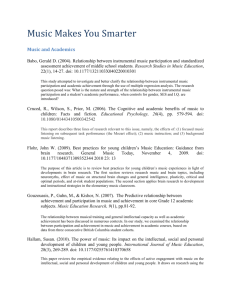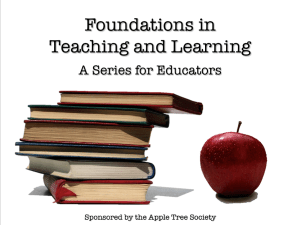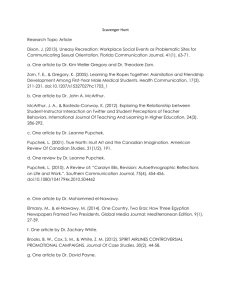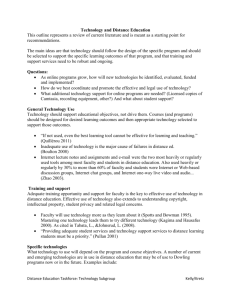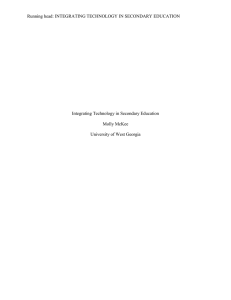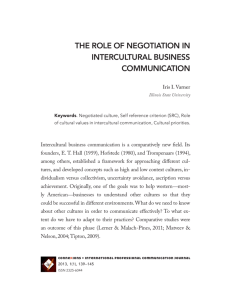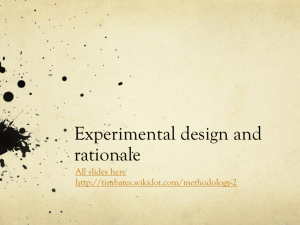Technology for Diverse Learners References Basham, J. D., Israel
advertisement
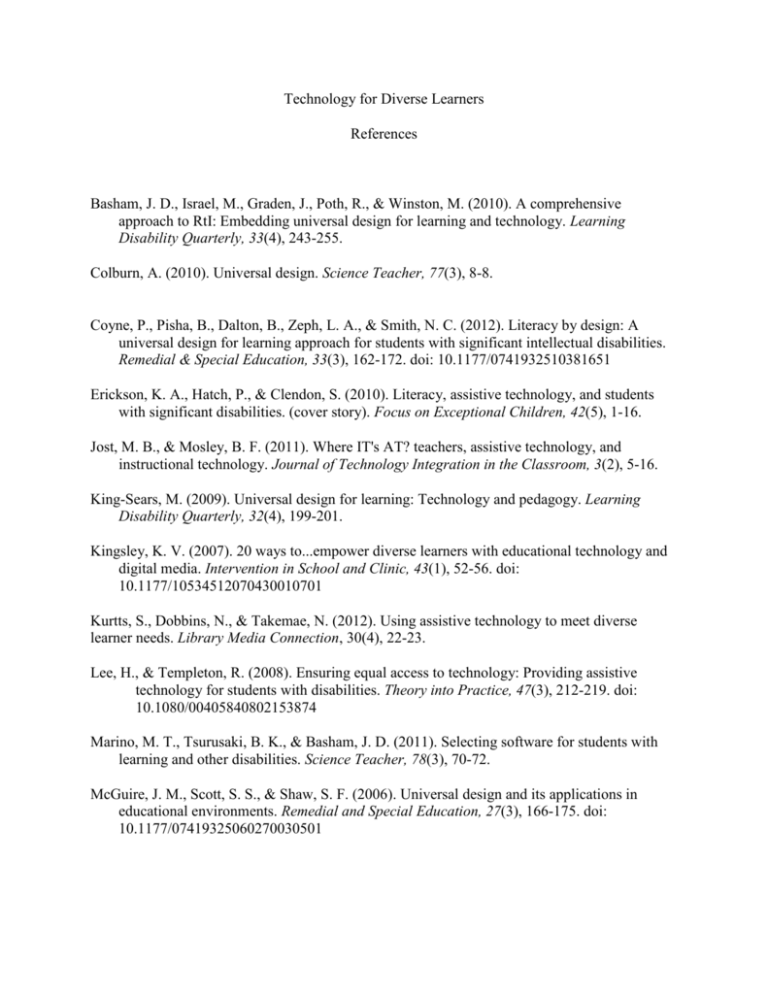
Technology for Diverse Learners References Basham, J. D., Israel, M., Graden, J., Poth, R., & Winston, M. (2010). A comprehensive approach to RtI: Embedding universal design for learning and technology. Learning Disability Quarterly, 33(4), 243-255. Colburn, A. (2010). Universal design. Science Teacher, 77(3), 8-8. Coyne, P., Pisha, B., Dalton, B., Zeph, L. A., & Smith, N. C. (2012). Literacy by design: A universal design for learning approach for students with significant intellectual disabilities. Remedial & Special Education, 33(3), 162-172. doi: 10.1177/0741932510381651 Erickson, K. A., Hatch, P., & Clendon, S. (2010). Literacy, assistive technology, and students with significant disabilities. (cover story). Focus on Exceptional Children, 42(5), 1-16. Jost, M. B., & Mosley, B. F. (2011). Where IT's AT? teachers, assistive technology, and instructional technology. Journal of Technology Integration in the Classroom, 3(2), 5-16. King-Sears, M. (2009). Universal design for learning: Technology and pedagogy. Learning Disability Quarterly, 32(4), 199-201. Kingsley, K. V. (2007). 20 ways to...empower diverse learners with educational technology and digital media. Intervention in School and Clinic, 43(1), 52-56. doi: 10.1177/10534512070430010701 Kurtts, S., Dobbins, N., & Takemae, N. (2012). Using assistive technology to meet diverse learner needs. Library Media Connection, 30(4), 22-23. Lee, H., & Templeton, R. (2008). Ensuring equal access to technology: Providing assistive technology for students with disabilities. Theory into Practice, 47(3), 212-219. doi: 10.1080/00405840802153874 Marino, M. T., Tsurusaki, B. K., & Basham, J. D. (2011). Selecting software for students with learning and other disabilities. Science Teacher, 78(3), 70-72. McGuire, J. M., Scott, S. S., & Shaw, S. F. (2006). Universal design and its applications in educational environments. Remedial and Special Education, 27(3), 166-175. doi: 10.1177/07419325060270030501 McPherson, S. (2009). "A dance with the butterflies:" A metamorphosis of teaching and learning through technology. Early Childhood Education Journal, 37(3), 229-236. doi: 10.1007/s10643-009-0338-8 Michael, M. G., & Trezek, B. J. (2006). Universal design and multiple literacies: Creating access and ownership for students with disabilities. Theory into Practice, 45(4), 1-1. doi:10.1207/s15430421tip4504_4 Pilgrim, J., Bledsoe, C., & Reily, S. (2012). New Technologies in the Classroom. Delta Kappa Gamma Bulletin, 78(4), 16-22. Sapp, W. (2009). Universal design: Online educational media for students with disabilities. Journal of Visual Impairment & Blindness, 103(8), 495-500. Skouge, J. R., Rao, K., & Boisvert, P. C. (2007). Promoting early literacy for diverse learners using audio and video technology. Early Childhood Education Journal, 35(1), 5-11. doi: 10.1007/s10643-007-0170-y Spencer, S. A. 1., (2011). Universal design for learning: Assistance for teachers in today's inclusive classrooms. Interdisciplinary Journal of Teaching & Learning, 1(1), 10-22. Spooner, F., Baker, J. N., Harris, A. A., Delzell, L. A., & Browder, D. M. (2007). Effects of training in universal design for learning on lesson plan development. Remedial & Special Education, 28(2), 108-116. Watson, S. L., & Watson, W. R. (2011). The role of technology and computer-based instruction in a disadvantaged alternative school's culture of learning. Computers in the Schools, 28(1), 39-55. doi: 10.1080/07380569.2011.552042

